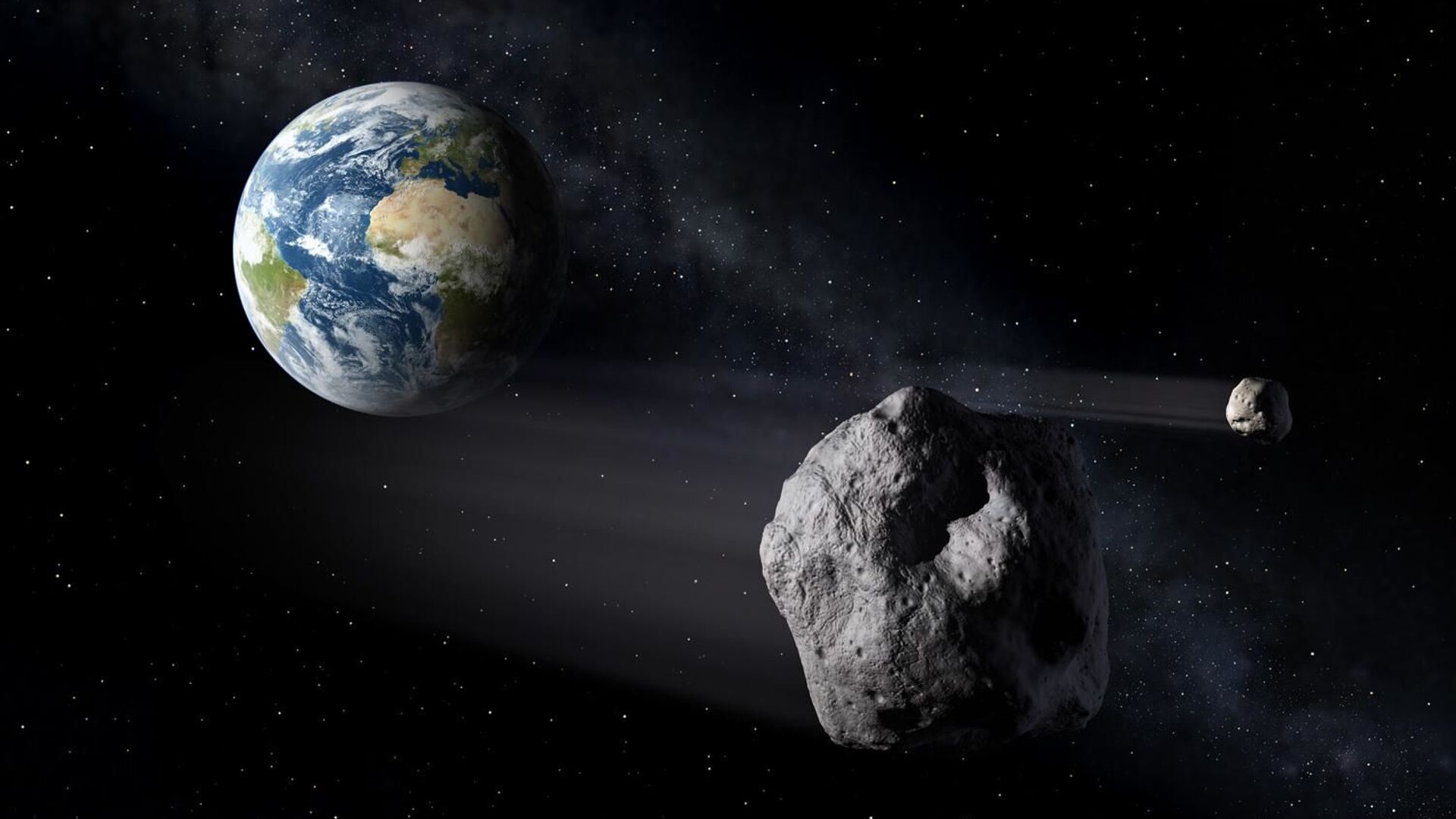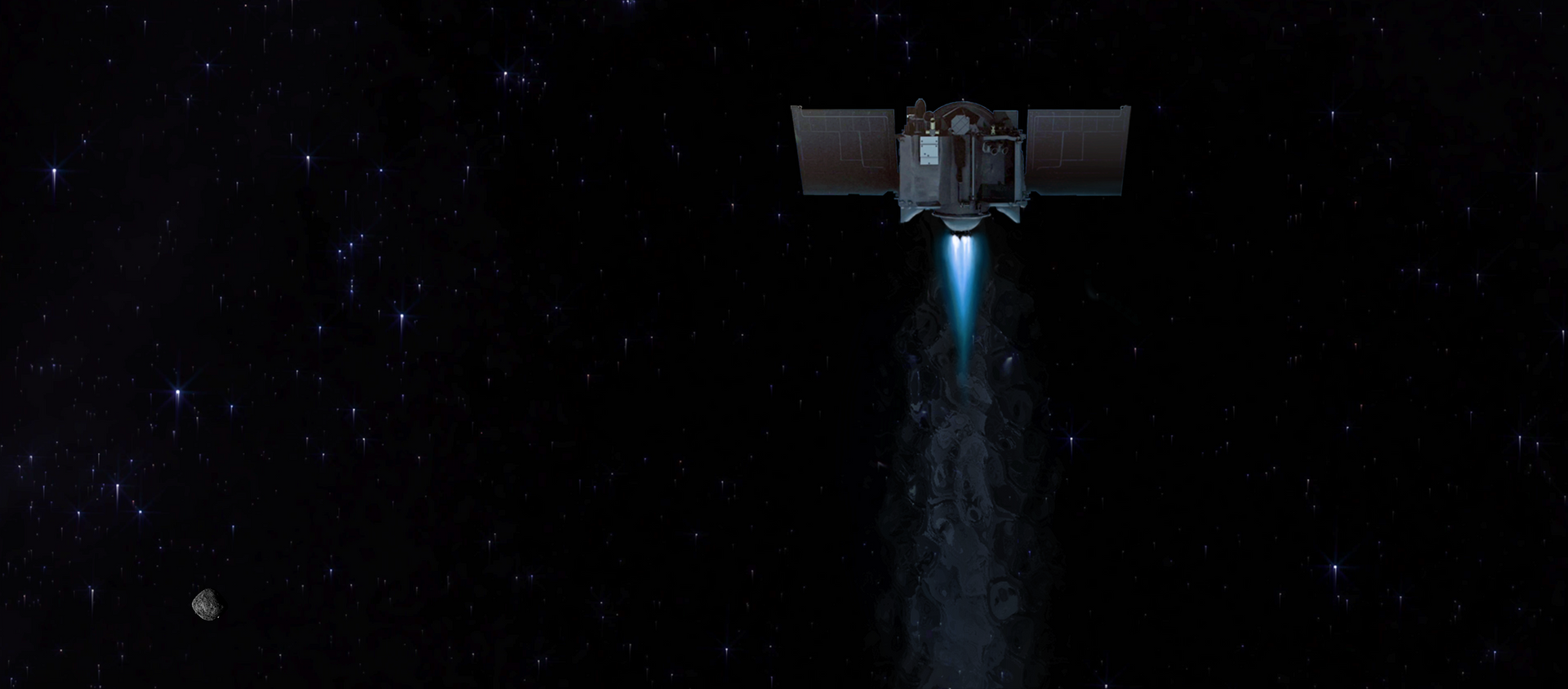https://sputnikglobe.com/20210812/potentially-hazardous-asteroid-bennu-may-collide-with-earth-in-2182-warns-nasa-1083587008.html
'Potentially Hazardous' Asteroid Bennu May Collide With Earth in 2182, Warns NASA
'Potentially Hazardous' Asteroid Bennu May Collide With Earth in 2182, Warns NASA
Sputnik International
According to scientists, the NASA asteroid probe, OSIRIS-REx, has allowed detailed measurement for the first time of the Yarkovsky effect, a small force caused... 12.08.2021, Sputnik International
2021-08-12T12:05+0000
2021-08-12T12:05+0000
2022-11-03T19:34+0000
newsfeed
world
nasa
asteroid
bennu
solar system
milky way
https://cdn1.img.sputnikglobe.com/img/107730/44/1077304484_0:37:1505:884_1920x0_80_0_0_ff5fb51d557256526555befe78b4a8c0.jpg
Bennu, an asteroid measuring half a kilometre in width, has a one in 1,750 chance of crashing into the Earth between now and the year 2300. A study by the National Aeronautics and Space Administration (NASA) released on Wednesday reveals that the chances of such a collision occurring are now greater than previously thought. The US space agency has even predicted a date - 24 September 2182 - as the likeliest time for a collision to occur.Bennu was recently visited by NASA’s Origins, Spectral Interpretation, Resource Identification, Security-Regolith Explorer (OSIRIS-REx) probe which found that it is a "rubble-pile asteroid" shaped like a spinning top, which was discovered in 1999.According to NASA, Bennu and fellow asteroid 1950 DA are the two most hazardous known near-Earth bodies in the solar system.The astronomers used precision-tracking data from the agency’s OSIRIS-REx probe to better understand Bennu's movements until the year 2300.The study by NASA researchers, published recently in the journal 'Icarus', improved the scientists' ability to determine the total impact probability and predict the orbits of other asteroids.Kelly Fast, programme manager for the Near-Earth Object Observations Program at NASA Headquarters in Washington DC, has said that NASA’s Planetary Defense mission is to find and monitor asteroids and comets that may pose a hazard to our planet. "We carry out this endeavour through continuing astronomical surveys that collect data to discover previously unknown objects and refine our orbital models for them."According to NASA, Bennu will come close to the Earth in 2135."Although the near-Earth object will not pose a danger to our planet at that time, scientists must understand Bennu’s exact trajectory during that encounter to predict how Earth’s gravity will alter the asteroid’s path around the Sun – and affect the hazard of Earth impact," the space agency said in a statement.OSIRIS-REx spent more than two years near the asteroid studying it, gathering information about its size, shape, mass, and composition. The probe also monitored its spin and orbital trajectory before leaving the asteroid earlier this year.The probe also took some rock samples and dust from the asteroid’s surface that will be delivered to Earth on 24 September, 2023, for further scientific investigation0.The scientists calculated that, although a 0.057 percent probability of impact throughout the year 2300 and 0.037 percent impact probability on 24 September 2182, is low, the revelations will help to highlight the crucial role that OSIRIS-REx operations played in precisely mapping Bennu’s orbit.According to Dante Lauretta, the OSIRIS-REx principal investigator, and professor at the University of Arizona, the orbital data from this mission helped us better appreciate Bennu’s impact changes over the next couple of centuries and our overall understanding of potentially hazardous asteroids – an incredible result."The spacecraft is now returning home, carrying a precious sample from this fascinating ancient object that will help us understand not only the history of the solar system but also the role of sunlight in altering Bennu’s orbit since we will measure the asteroid’s thermal properties at unprecedented scales in laboratories on Earth,” Lauretta added.
https://sputnikglobe.com/20210510/nasas-osiris-rex-spacecraft-returning-to-earth-with-asteroid-bennu-sample-in-tow--1082850564.html
https://sputnikglobe.com/20201020/nasas-osiris-rex-spacecraft-lands-on-bennu-asteroid-to-grab-sample-for-return-to-earth---video-1080830690.html
bennu
milky way
Sputnik International
feedback@sputniknews.com
+74956456601
MIA „Rossiya Segodnya“
2021
Sushmita Panda
https://cdn1.img.sputnikglobe.com/img/07e5/05/12/1082926186_0:0:2048:2048_100x100_80_0_0_4474d0d7e27a36878eb8727832be74b4.jpg
Sushmita Panda
https://cdn1.img.sputnikglobe.com/img/07e5/05/12/1082926186_0:0:2048:2048_100x100_80_0_0_4474d0d7e27a36878eb8727832be74b4.jpg
News
en_EN
Sputnik International
feedback@sputniknews.com
+74956456601
MIA „Rossiya Segodnya“
Sputnik International
feedback@sputniknews.com
+74956456601
MIA „Rossiya Segodnya“
Sushmita Panda
https://cdn1.img.sputnikglobe.com/img/07e5/05/12/1082926186_0:0:2048:2048_100x100_80_0_0_4474d0d7e27a36878eb8727832be74b4.jpg
newsfeed, nasa, asteroid, bennu, solar system, milky way
newsfeed, nasa, asteroid, bennu, solar system, milky way
'Potentially Hazardous' Asteroid Bennu May Collide With Earth in 2182, Warns NASA
12:05 GMT 12.08.2021 (Updated: 19:34 GMT 03.11.2022) According to scientists, the NASA asteroid probe, OSIRIS-REx, has allowed detailed measurement for the first time of the Yarkovsky effect, a small force caused by the sun which affects the orbit of asteroids. The team also evaluated such other factors as the gravity of the Sun, the planets, their moons, and Bennu’s particle-ejection events.
Bennu, an asteroid measuring half a kilometre in width, has a one in 1,750 chance of crashing into the Earth between now and the year 2300. A study by the National Aeronautics and Space Administration (NASA) released on Wednesday reveals that the chances of such a collision occurring are now greater than previously thought.
The US space agency has even predicted a date - 24 September 2182 - as the likeliest time for a collision to occur.
Bennu was recently visited by
NASA’s Origins, Spectral Interpretation, Resource Identification, Security-Regolith Explorer (OSIRIS-REx) probe which found that it is a "rubble-pile asteroid" shaped like a spinning top, which was discovered in 1999.
According to NASA, Bennu and fellow asteroid 1950 DA are the two most hazardous known near-Earth bodies in the solar system.
The astronomers used precision-tracking data from the agency’s OSIRIS-REx probe to better understand Bennu's movements until the year 2300.
The study by NASA researchers, published recently in the journal 'Icarus', improved the scientists' ability to determine the total impact probability and predict the orbits of other asteroids.
Kelly Fast, programme manager for the Near-Earth Object Observations Program at NASA Headquarters in Washington DC, has said that NASA’s Planetary Defense mission is to find and monitor asteroids and comets that may pose a hazard to our planet. "We carry out this endeavour through continuing astronomical surveys that collect data to discover previously unknown objects and refine our orbital models for them."
"The OSIRIS-REx mission has provided an extraordinary opportunity to refine and test these models, helping us better predict where Bennu will be when it makes its close approach to Earth more than a century from now,” Fast stated in a statement.
According to NASA, Bennu will come close to the Earth in 2135.
"Although the near-Earth object will not pose a danger to our planet at that time, scientists must understand Bennu’s exact trajectory during that encounter to predict how Earth’s gravity will alter the asteroid’s path around the Sun – and affect the hazard of Earth impact," the space agency said in a statement.
OSIRIS-REx spent more than two years near the asteroid studying it, gathering information about its size, shape, mass, and composition. The probe also monitored its spin and orbital trajectory before leaving the asteroid earlier this year.
The probe also took some
rock samples and dust from the asteroid’s surface that will be delivered to Earth on 24 September, 2023, for further scientific investigation0.
"The OSIRIS-REx data gives us so much more precise information, we can test the limits of our models and calculate the future trajectory of Bennu to a very high degree of certainty throughout 2135. We’ve never modelled an asteroid’s trajectory to this precision before," said study lead Davide Farnocchia, of the Center for Near-Earth Object Studies (CNEOS), which is managed by NASA’s Jet Propulsion Laboratory in Southern California.

20 October 2020, 21:03 GMT
The scientists calculated that, although a 0.057 percent probability of impact throughout the year 2300 and 0.037 percent impact probability on 24 September 2182, is low, the revelations will help to highlight the crucial role that OSIRIS-REx operations played in precisely mapping Bennu’s orbit.
According to Dante Lauretta, the OSIRIS-REx principal investigator, and professor at the University of Arizona, the orbital data from this mission helped us better appreciate Bennu’s impact changes over the next couple of centuries and our overall understanding of potentially hazardous asteroids – an incredible result.
"The spacecraft is now returning home, carrying a precious sample from this fascinating ancient object that will help us understand not only the history of the solar system but also the role of sunlight in altering Bennu’s orbit since we will measure the asteroid’s thermal properties at unprecedented scales in laboratories on Earth,” Lauretta added.





